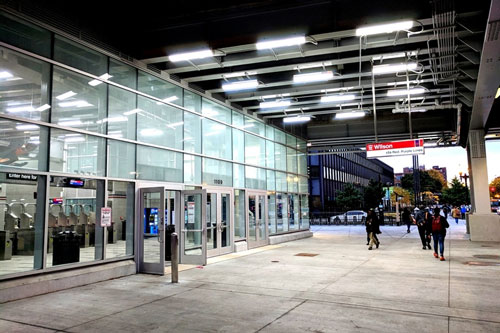Transit-Oriented Development (TOD) Ordinance
Chicago
Policy and Governance

Program background
The Chicago region is home to the second-largest public transit system in the United States. The City’s extensive rail system is one of its most important assets, allowing residents to connect to the neighborhoods, jobs and amenities, which strengthens our economy and quality of life.
The Chicago City Council approved the Transit-Oriented Development (TOD) Ordinance in 2013 to provide incentives for developers when building near transit stations. The ordinance amended the City’s zoning code to allow for increases in density and reductions in parking minimums for specific parcels near CTA and Metra rail stations, with the goals of attracting housing and job growth to areas near transit and improving the walkability and retail spending in commercial corridors near transit. The ordinance also sought to increase transit ridership throughout the city, which is in accord with the Chicago Metropolitan Agency for Planning’s GO TO 2040 goal of doubling daily transit ridership.
How it works
Parcels within 600 feet of a CTA or Metra rail station entrance on most streets, and within 1,200 feet on a street with a pedestrian designation may be eligible for incentives through the ordinance. The ordinance offers reductions in off-street parking minimum requirements for qualifying parcels. The ordinance allows for up to a 100 percent decrease in the parking minimum for non-residential use buildings and up to a 50 percent decrease for residential use buildings in B (Business), C (Commercial), D (Downtown) and M (Manufacturing) zoning districts. A developer must go through the Administrative Adjustment process if they wish to be granted a reduction greater than 50 percent for a non-residential project. Each parking space removed from any type of development is required to be replaced by at least one bicycle space, encouraging other modes of transportation.
Developers can take advantage of a number of opportunities when vehicular parking is reduced by more than 50 percent for projects in transit-served locations. In B-3, C-3 and D-3 districts, the ordinance permits up to a 17 percent increase in the floor area ratio, from 3 to 3.5. The ordinance also allows for changes in the minimum lot area per unit (MLA), which can significantly increase the number of dwelling units in a development. The ordinance lowered the MLA for single-room occupancy units from 200 to 135 square feet, from 300 to 200 square feet for efficiency units, and from 400 to 300 square feet for dwelling units. Additionally, developers can receive permission to increase building height in B-3 and C-3, resulting in denser mixed-use construction. Buildings with lot frontages ranging from 50 to 99.9 feet can see up to an 8 percent increase in allowable height. Depending on whether or not the project has ground floor commercial space, buildings with lot frontages of 100 feet or more may be eligible for a 15 to 17 percent height increase. Overall, the TOD ordinance creates greater incentives for developers interested in building near the city’s transit assets and with denser, mixed-use developments that support job growth and livability across Chicago.
Contact
Department of Planning and Development, City of Chicago
312-744-4190, www.cityofchicago.org
-
Goal
To incentivize development around Chicago Transit Authority (CTA) and Metra rail stations in Chicago.
-
Target
Parcels near rail stations.
-
Financing
The ordinance allows for reductions in off-street parking minimum requirements and increases in density for qualifying parcels. There is no direct funding attached to the policy.
-
Successes
As of 2014, seven developments (all in the planning stages) had indicated an interest in taking advantage of the ordinance, including:
- A five-story, mixed-use rental development next to the Paulina Brown Line station in Lakeview;
- A 66-unit development consisting mostly of studio apartments near the California Blue Line station in Logan Square; and
- An eight-story, mixed-use development at Clark and Belmont streets, less than a quarter-mile away from the Belmont Red, Brown and Purple lines.
-
Lessons learned
Allowing for increased density and reduced parking minimums has encouraged development near transit.